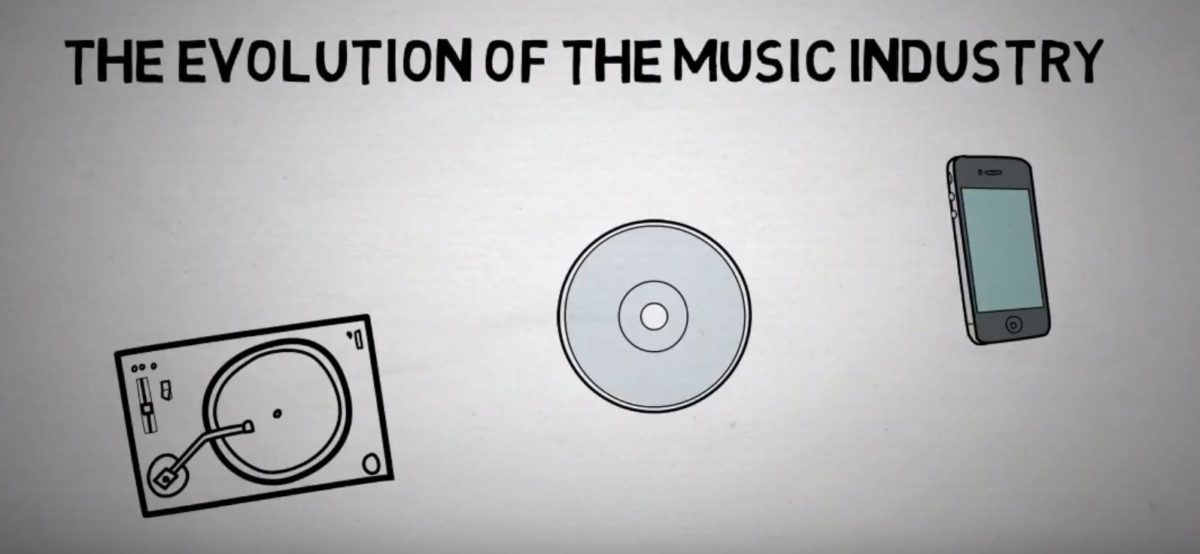Berklee Today magazine (Alhadeff & McChrystal, n.d..) described the evolvement of the music industry very simply:
“The tools for a new artistic fusion of aural, visual, and dramatic means of expression are already within the reach of almost every household. As music continues to evolve with the technology and with input from other yet unidentified players, it will likely be woven deeper into the fabric of our daily existence and become even more ubiquitous.”
The industry has advanced so much, that we have come from vinyl, to tape, to CD’s and now, we use streaming to listen to music. In fact, streaming with the help of tools such as Spotify and YouTube has become such a big deal that currently it makes up the majority (59%) of digital revenues in the industry (Ifpi. org, 2016).
But let’s roll back a little, what does this disruption actually mean for the music industry?
The most obvious effect is that the range of music available to consumers, online or offline, is much wider than before which promotes high price sensitivity. At the same time, however, their advancing tech-savviness makes them critical towards services quality. Plus, it is now much easier for small or local artists to reach greater audiences.
On the negative end, major firms struggle with profitability and have acquired skills that cannot be used in other industries resulting to high exit barriers. Also, relationships with artists are not always the best. An example is the latest scandal about Taylor Swift who refused to make her music available through free streaming services.
Enough talking about the past. What does the future of the music industry look like?
In the future, the streaming industry should create more partnerships in order to generate additional revenues, considering that streamers are 50% more willing to spend on event tickets and 90% more willing to spend on music than the average consumer (Loechner, 2013). Speaking of events, can you imagine concerts going digital with VR/AR? This might completely change the revenue structure of the industry!
For musicians the future also seems bright as long as they turn their social media presence to their advantage. The findings indicate that streaming services such as SoundCloud and YouTube play an essential role in artists’ digital album sales. In fact, streamers have been found to be 96% more likely to follow celebrities on social media and 91% more likely to share different links on their social media than the average consumer (Loechner, 2013).
However, streaming companies have to pay attention to blockchain technology, which is exploring new markets. This is a possible threat to the middlemen of the music industry.
All considered, in the future streaming music companies will benefit most of the current trends. Those companies should be able to target their customers more precisely and efficiently which will generate a bigger customer base and more revenues.
For more information, please check out our video at: https://www.youtube.com/watch?v=t225cC8LiOI&feature=youtu.be
/Team 36/
References:
Loechner,J. 2013, ‘High Entertainment Spenders Account For 70% Of Home Entertainment’, Mediapost.com, available at: https://www.mediapost.com/publications/article/200158/high-entertainment-spenders-account-for-70-of-hom.html , [Last accessed: 27 September 2017].
Alhadeff, P. and McChrystal, C. n.d., ‘Technology and Music Consumption’, Berklee Today online magazine, available at: https://www.berklee.edu/bt/153/technology.html , [Last accessed: 27 September 2017].
Ifpi.org n.d., ‘An explosion in global music consumption supported by multiple platforms’, Ifpi.org, available at: http://www.ifpi.org/facts-and-stats.php, [Last accessed: 27 September 2017].

